“I had no idea how many people had died. I had no idea the extent of the humanitarian crisis.”
In the lead-up to the US midterm elections, President Donald Trump has stoked fears about undocumented immigration. After repeatedly saying that immigrants from Latin America are criminals and peddling baseless claims that unidentified people from the Middle East are part of a “caravan of migrants” making its way north from Honduras, Trump ordered the deployment of more than 5,000 soldiers to the southern US border.
Decades of acrimonious public debate over undocumented immigration in the United States has focused on security, crime, and economics while largely overlooking the people at the centre of the issue and the consequences of US attempts to prevent them from entering the country.
One of the starkest facts about this humanitarian emergency is that at least 6,700 bodies have been found since 2000 – likely only a fraction of the actual number of people who have died trying to cross the southern US border over this period. More than a third of these bodies have been found in the Sonoran Desert in southern Arizona, where migration routes have been pushed into increasingly harsh and remote terrain.
Seldom reported and virtually unheard of outside the border region, these bodies have become a cause for a small constellation of humanitarian groups in southern Arizona, spawning an unlikely effort to prevent deaths by placing drinking water along migration trails in the desert.
“I found it shocking,” Brian Best, a volunteer who moved to Arizona a couple years ago, says of the situation in the desert. “I had no idea how many people had died. I had no idea the extent of the humanitarian crisis.”
Trying to save lives in this way is not uncontroversial. Undocumented immigration is one of the most polarising issues in US politics and aid groups operate in the same areas that cartels use to smuggle drugs into the country. Inevitably, humanitarian efforts are caught up in the politics and paranoia surrounding these two issues.
The intensity of the situation has led to a strained relationship between the humanitarians and the Border Patrol, the federal agency tasked with preventing undocumented immigration. Nearly two decades after aid efforts began, the numbers crossing the border have reached a historic low but the proportion of people dying is rising.
A silent prayer
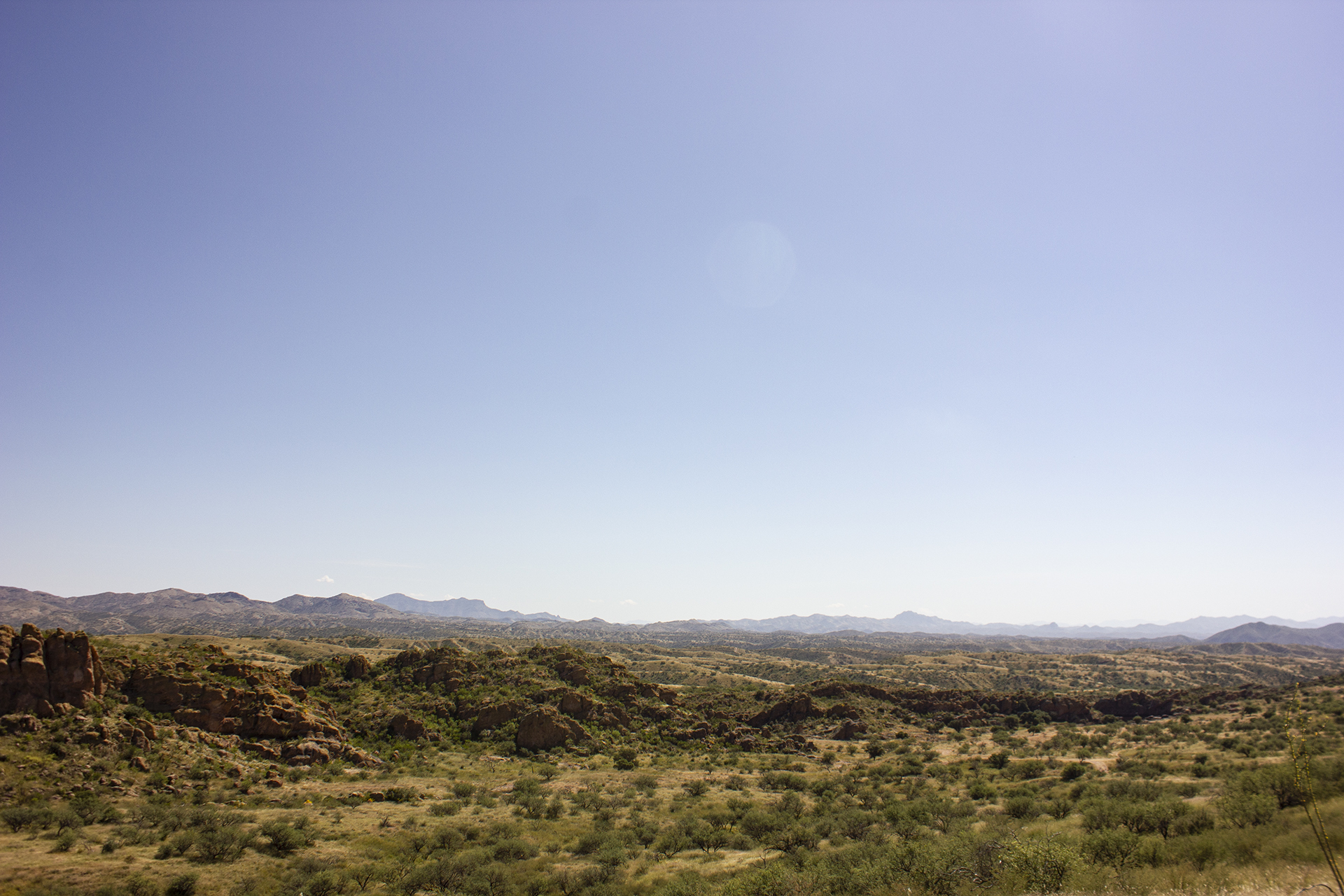
Early on a Friday morning, Stephen Saltonstall, 74, sits behind the steering wheel of a flatbed pickup as it shakes and rattles towards the US-Mexico border. The back of the truck is loaded with equipment: a 300-gallon plastic tank of drinking water, a gas operated pump to pull the water out, and a long, lead-free hose to deliver it into barrels at the water stations Humane Borders, the NGO Saltonstall volunteers with, maintains across southern Arizona.
It’s mid-September and the temperature is already climbing. By midday it will reach well over 100 degrees (38 celsius), and there are no clouds to interrupt the sun as it bakes the hardscrabble landscape of the Sonoran Desert, surprisingly green from the recently departed monsoon rains. Scraggly mesquite trees and saguaro cactuses with comically tubular arms whir past as Saltonstall guides the truck along Route 286 southwest of Tucson. A veteran of the civil rights movement with a lifelong commitment to social justice – like many others involved in the humanitarian aid effort here – he has made this drive more than 150 times in the three years since moving to Arizona from the northeastern United States.
Around mile marker 38 – signifying 38 miles north of the border – 13 miles north of an inland US Border Patrol checkpoint, Saltonstall eases the truck off to the side of the road. Stepping out, he walks to the top of a small hill about 10 feet from where the asphalt ends. Stopping next to a small wooden cross planted in the cracked earth, he puts his hands together and offers a silent prayer.
“I’m sorry that you died an awful death here,” Saltonstall says when he’s finished praying. “Wherever you are now, I hope you are in a better place.”
The cross is painted red and draped with a strand of rosary beads. It marks the spot – on top of this small hill, in plain sight of the road – where the body of someone who irregularly crossed the border into the United States was found in July 2017. The person likely succumbed to thirst or hyperthermia after spending days trekking through this harsh, remote environment. But no one knows for sure. By the time someone came across the remains, scavenging birds and animals had stripped the body down to a skeleton. There’s no official cause of death and the person’s identity is unknown.

Nearly 3,000 human remains like this one have been found in southern Arizona since the year 2000. Many more are probably lost in this vast and sparsely populated desert, lying in areas too remote and infrequently trafficked to be discovered before they decompose and end up being carried off in pieces by feasting animals, scattered and rendered invisible.
Prevention through deterrence
It wasn’t always like this in southern Arizona.
The office of Pima County medical examiner Dr. Greg Hess receives all the human remains found near the migration trails in three of the four Arizonan counties that border Mexico.
“In the 1990s we would average about 15 of these types of remains being recovered every year,” says Hess. Starting in 2002, that average jumped to 160 bodies per year, he adds.
Most people irregularly crossing the border used to simply sneak over in urban areas where it wasn’t too dangerous. But things started to change in the mid 1990s with the introduction of a federal policy called “prevention through deterrence”. The policy directed Border Patrol to concentrate agents and resources in the urban areas where most people were crossing. The architects of the strategy predicted that “illegal traffic will be deterred, or forced over more hostile terrain, less suited for crossing and more suited for enforcement.”
The construction of border walls between urban areas in northern Mexico and their neighbouring towns and cities in the United States soon followed. That funnelled the movement of migrants decisively into remote areas like the desert in southern Arizona, but had no discernible impact on the number of people irregularly entering the United States.
Throughout the 1990s Border Patrol apprehended more than one million people every year irregularly entering the United States, with hundreds of thousands of people detained in the area south of Tucson. While there are no definitive statistics on how many people managed to get through, the Pew Research Center estimates that 8.6 million undocumented immigrants were living in the United States by the year 2000, compared to 3.5 million in 1990, with only a small drop in the percentage of Latin American origin.
After the attacks on 9/11, new fears surrounded the issue of undocumented immigration and enforcement efforts were ratched up even further. Yet Border Patrol continued to apprehend an average of just over a million people a year and the undocumented population continued to increase, peaking at 12.2 million in 2007, according to Pew estimates.
Only in the past decade has undocumented migration to the United States begun to dramatically decline. The drop-off coincided with the 2008 financial crisis and a massive expansion of the Border Patrol that saw both its budget and the number of agents in the field nearly double. The US economy has recovered in recent years, but undocumented migration has remained historically low, with 310,000 people apprehended last year – the fewest since 1971. The number of bodies being found in the desert has remained fairly consistent over the decades, suggesting a recent increase in deaths proportional to the numbers crossing.
Corlata Wray, 62, watched in the early 2000s as federal policy brought a humanitarian crisis to her back yard. Born in Durango, Mexico, Wray has lived in the small, rural town of Arivaca, Arizona, 12 miles from the border, for the better part of four decades. A slow trickle of people has always moved through Arivaca given its location, but in the late 1990s the number of people trekking across the desert close to Wray’s home dramatically increased.
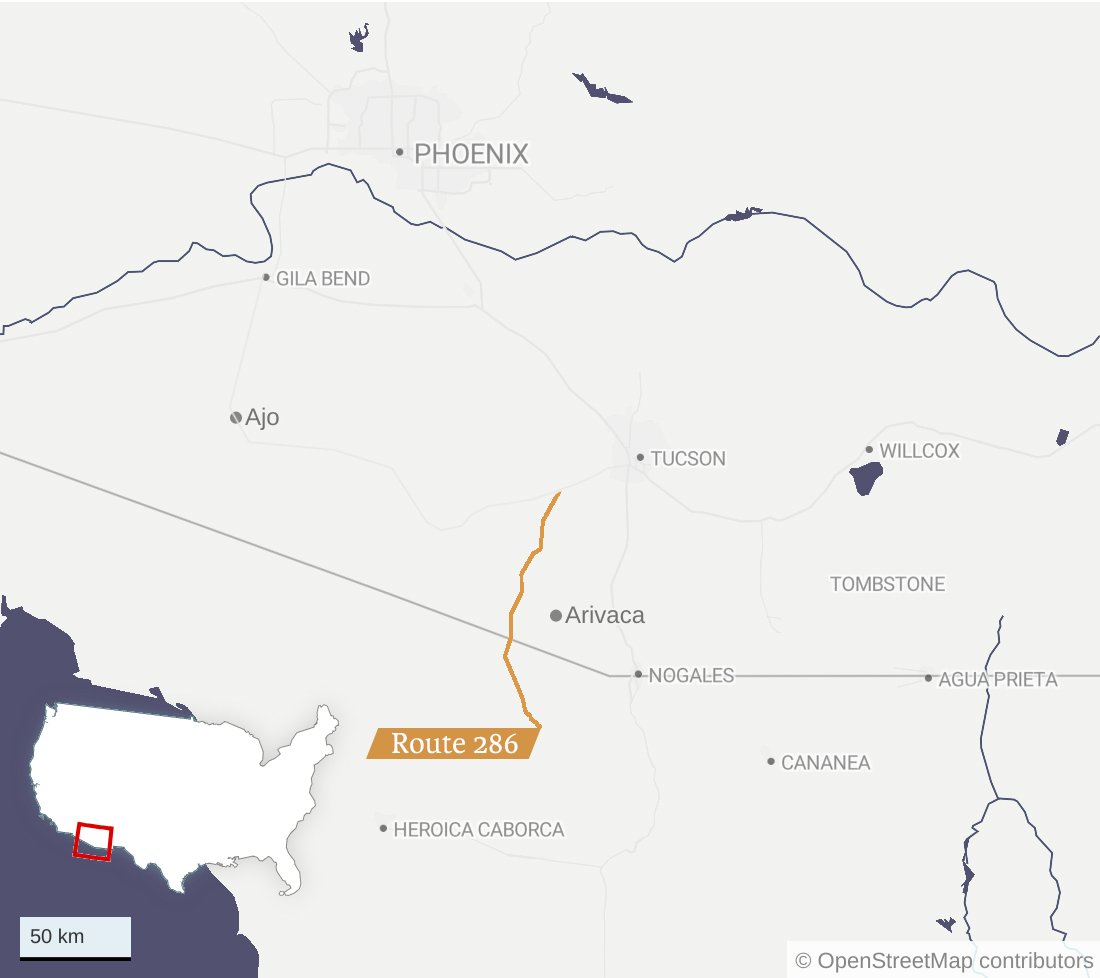
In the early years people would knock on the door and Wray would give them water and a little bit of food before they continued on their way. Helping migrants in this way was a normal part of life, according to many people IRIN spoke to living in the border region. But as enforcement efforts ramped up, “everything changed”, says Wray, who now volunteers regularly with organisations providing aid and support to migrants. “I started to see more suffering with the migrants.”
Now the people who end up on her property are usually in a desperate situation – parched and sunburnt, with bloodied and blistered feet and twisted or broken limbs. “They don’t know which way to go, and that’s when their life is in danger because they’re lost. They have no water. They have no food. And then the desert is not beautiful anymore. Es mortal,” Wray says, switching into Spanish – “It’s deadly”.
“We have to do something”
As the “prevention through deterrence” policy came into full effect in the early 2000s, the fact that migrants were dying in the desert at an alarming rate was hard for some people to overlook. Ila Abernathy, a long-time resident of Tucson, 65 miles north of the border, remembers a point in July 2002 when a dozen or more bodies were found in one weekend.
Fifty-nine at the time, Abernathy had moved to Tucson as a young adult and had been active in the waning years of the sanctuary movement, which sought to provide safe-haven to refugees fleeing civil wars in Central America in the 1980s as the US government restricted their ability to seek asylum. A decade and half later, the network from that movement was still intact.
Following the news of the deaths in July 2002, a meeting was called at the Southside Presbyterian Church in Tucson. “This is a new crisis. We have to do something,” Abernathy recalls of the meeting’s conclusion. “We need to advocate and we need to get out there and search for people before they die.”
In the beginning, that meant giving aid to people directly. Between 2002 and 2008, Border Patrol apprehended between 300,000 and 500,000 people every year in the area south of Tucson. “You’d just drive down the road early in the morning and there would be clusters of people either ready to give up or else already in Border Patrol capture,” Abernathy says.
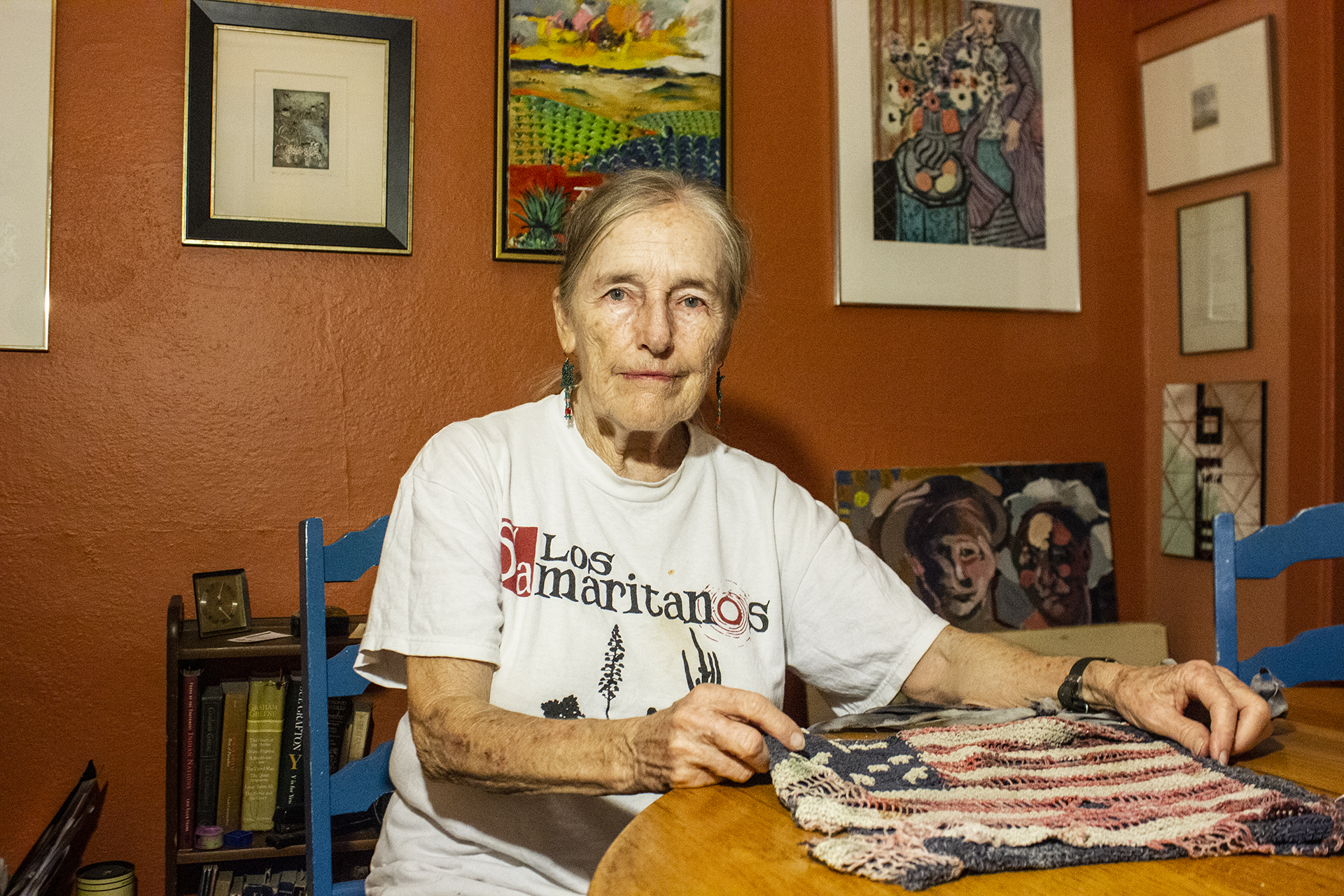
The group that formed out of the meeting at the Southside Presbyterian Church, the Tucson Samaritans, travelled the roads providing food, water, and medical aid to people in need. Two other groups, Humane Borders and No More Deaths, formed around the same time with similar missions. Their members tended to be active in multiple groups at the same time and were often veterans of the sanctuary or civil rights movements, like Abernathy and Saltonstall. Others were young people who came to the region on educational trips and decided to stay, or longtime residents of southern Arizona who had watched the crisis develop and felt compelled to try to help.
But their work soon got harder. In 2006, the administration of US president George W. Bush announced a massive expansion of the Border Patrol. With nearly double the number of agents in the field and more resources, it became increasingly rare to find migrants along the roads, or even close to them, according to Abernathy. Unable to deliver aid to people directly, groups started hiking into the remote desert to find the trails migrants were using and leave behind gallon jugs of drinking water in the hope they would be found by people in need. It’s an effort that has continued now for close to 12 years.
Into the desert
On a Sunday morning, Best, 59, is picking his way along a migration trail deep in the Sonoran Desert with two other volunteers from the Tucson Samaritans. If you could travel in a straight line, the nearest paved road would be about 10 miles away. But moving in a straight line isn’t an option out here.
Best and the other volunteers left their four wheel drive SUV behind some time ago after following the winding, rocky roads as far as they could. They are now hiking on foot towards the US-Mexico border. The landscape doesn’t distinguish between the two countries. In every direction, cactuses and mesquite trees carpet low, jagged hills. At the far limits of the vast, open expanse, towering mountains run like rows of crooked shark’s teeth along the horizon.
This is the “hostile terrain” referred to by the architects of “prevention through deterrence” where migration routes have been pushed. There’s no man-made wall at the border here – just a rusted barbed wire fence. But someone would have to hike about 30 miles to make it north of the inland Border Patrol checkpoint on Route 286 to reach a potential pick-up point, or 60 miles to make it to Tucson. Humanitarian aid volunteers say the trip usually takes from three to 10 days.
In the summertime the temperature reaches 120 degrees (49 celsius) and in the winter it drops low enough for people to die of hypothermia. There are 17 species of rattlesnakes in this desert, which is also home to the venomous gila monster lizard, tarantulas, scorpions, and other potentially dangerous animals. Natural water sources are few and far between, Border Patrol agents traverse the area in all-terrain vehicles and pickup trucks, on horseback and in helicopters; and there’s surveillance equipment laced throughout the landscape. “I’m really surprised that anybody gets through,” says one humanitarian volunteer, “but they do.”
On the trail where Best is walking, the ground is uneven and rocks jut out at menacing angles. It’s easy to twist an ankle and impossible to move forward without getting scraped by mesquite branches or poked by cactus spines.
Best has been visiting this area of the desert for a little over a year. In the beginning, there were a lot of signs that migrants were passing through – black plastic water bottles from Mexico, food wrappers with recent expiration dates, even discarded backpacks and clothing – so the Samaritans started putting jugs of water here hoping it would help fortify people against the dangers of the long journey ahead. But recently the jugs have been sitting untouched. It looks like the route has shifted elsewhere.
During the second half of the morning Best will explore new territory – literally bushwhacking through the desert – to try to figure out where the route has moved to and where water should be placed. More than a decade after humanitarian aid groups started hiking out into the desert, there are still plenty of places they have yet to set foot in. Figuring out where people are moving and then putting out water is a time-consuming and labour-intensive process of trial and error. “It is very slow and inefficient in some ways, but I think really important,” Best says. “There’s no other way to do it.”
In the 12 years since they started, over the course of innumerable hikes like this one, the Samaritans have mapped somewhere between 1,500 and 2,000 miles of trails south of Tucson, according to volunteers. Two different groups go out every day, bringing water to hundreds of locations over the course of any given week. In total in the past two years, according to one volunteer, the group has placed 3,295 gallon jugs of water in the desert. No More Deaths, which also relies on volunteers to hike water into the desert, says it has put out 31,558 gallons in past three years, 86 percent of which was used.
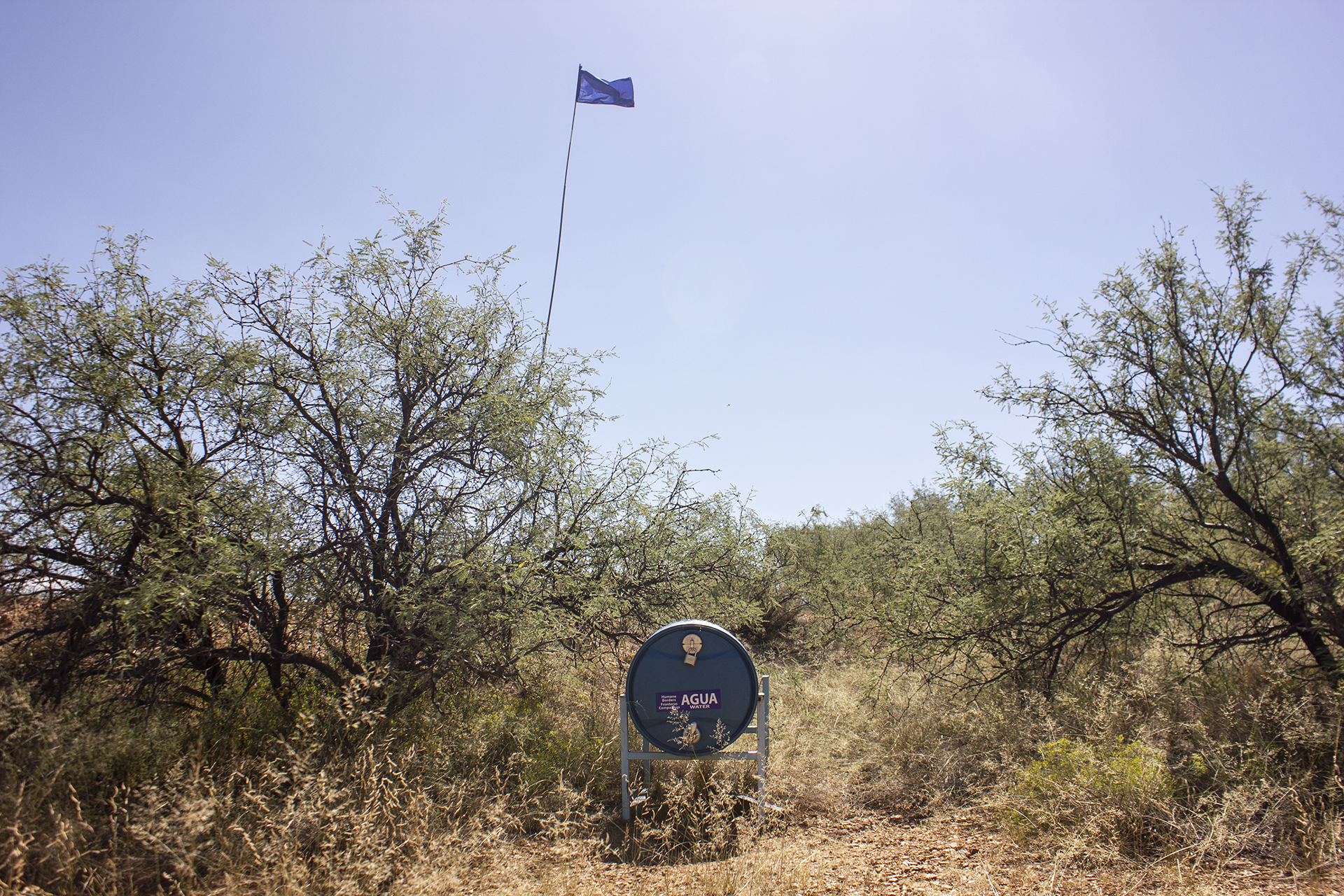
Humane Borders, the organisation that Saltonstall volunteers with, operates using a slightly different model. It maintains fixed water stations at 51 locations on public and private land in southern Arizona that it services by truck. Each station consists of a 55-gallon barrel with a blue flag flying high in the sky to mark its location. Last year the group put 70,000 gallons of water into these stations. Between the three groups, comprised of a couple hundred active volunteers, that’s equivalent to about 10 backyard swimming pools full of water placed along migration trails in the desert, one bottle or barrel at a time.
Not so straightforward
The terrain where the humanitarian aid groups put water is some of the most politically charged in the US, at the heart of debates about both undocumented immigration and the movement of illicit drugs into the country. Needless to say, not everybody supports what the groups are doing.
Cartels have a strong presence in the towns and cities of northern Mexico, and control and profit from the movement of both people and drugs across the border. Critics of the humanitarian groups say they are helping people break the law both by assisting migrants who are irregularly entering the United States and by putting water out that cartel drug runners and scouts can drink just as easily as anyone else.
Humane Borders receives public funding from the Board of Supervisors in Pima County, but the vote to approve the funding is split: three Democratic members in favour and two Republican members against. Both Republican supervisors declined to comment when IRIN asked about their opposition to the funding – a spokesperson for one said the vote “speaks for itself.”
The relationship between the humanitarian aid groups and Border Patrol has also been rocky. In particular, No More Deaths has been openly critical of Border Patrol, documenting agents destroying water drops and arguing that the agency’s tactics are contributing to deaths and disappearances in the desert. Border Patrol says it doesn’t condone the destruction of humanitarian aid drops and that it ultimately views its work as humanitarian as well.
Nine members of No More Deaths have also been arrested on various charges related to their humanitarian work, ranging from trespassing and littering to harbouring illegal aliens, in what volunteers see as an effort to criminalise aid activities in the desert. One of those arrested faces up to 20 years in prison if convicted, and the Intercept has reported that court documents and other evidence suggest some of the arrests were retaliation against No More Deaths for publicising Border Patrol abuses.
As far as whether water drops are benefitting cartel members or helping people break the law, the questions aren’t really important to many volunteers. “The real basic, humane argument is that nobody should be dying out here,” Best, the Samaritans volunteer, says.
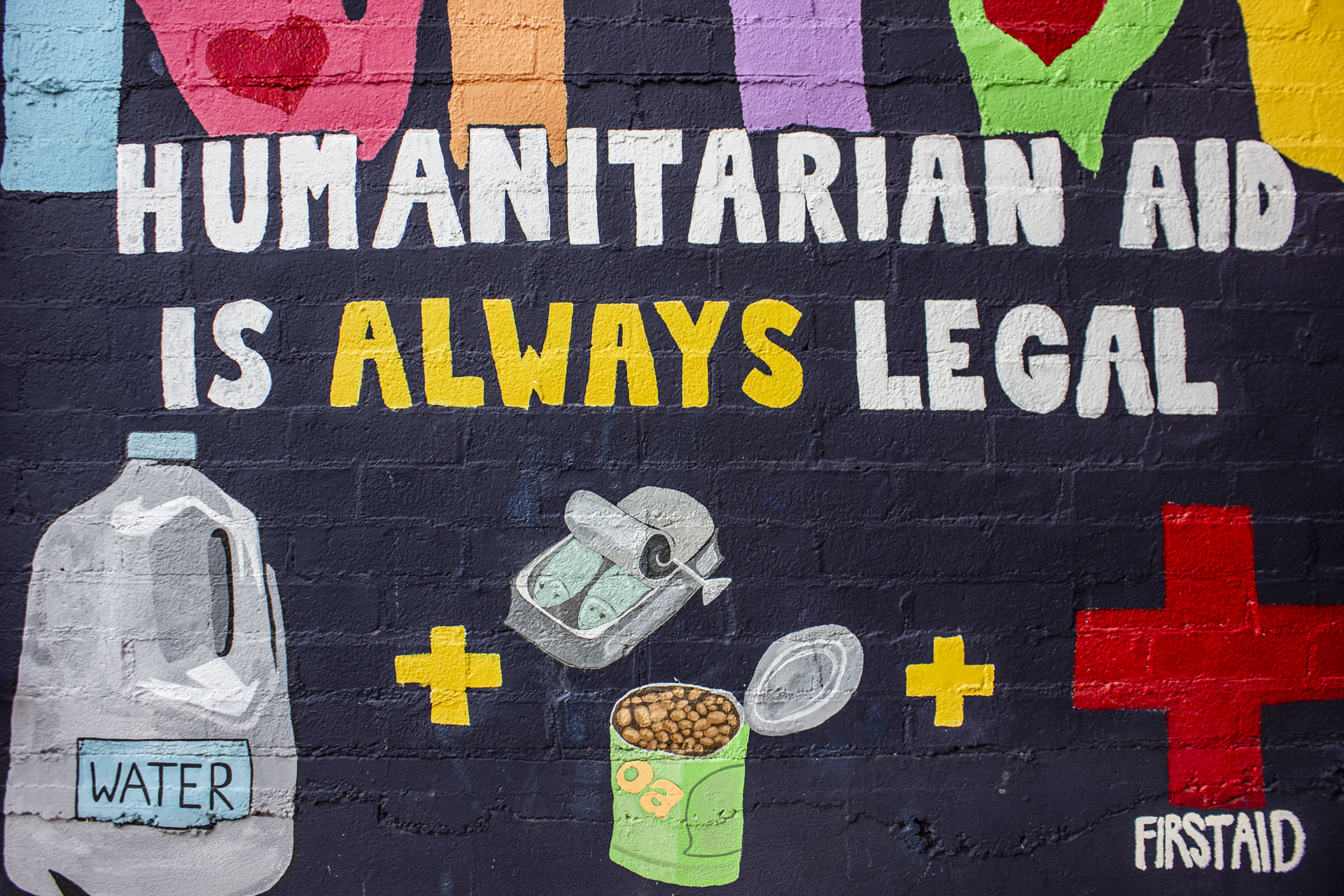
A more important question is whether the water drops are effective at saving lives. There’s anecdotal evidence from migrants who are caught by Border Patrol and later deported to northern Mexico that it is reaching people in need, but there’s no way to tell how many.
There’s also the fact that, even as the number of people crossing the desert south of Tucson has decreased, the number of bodies found has remained relatively consistent. Also, not every death in the desert is caused by dehydration. “If somebody has heat stroke it may not be a process of having water available,” explains Hess, the medical examiner. “They may have water with them. It’s just that you’re too hot.”
“What value can you put on saving even one life?”
Considering that Border Patrol apprehended an average of over 100 people per day south of Tucson last year, and that an untold number of others crossed without being caught, and that the water isn’t necessarily in all of the places where people are trekking, the volunteers are aware of the limits of what they do. One estimated that over the course of an eight- to 10-hour hike a group of four people could only put enough water out to sustain 15 migrants for one day.
“What we do is small, and we know it does some good,” Abernathy says. “We don’t want to delude ourselves into thinking this is the solution… [But] what value can you put on saving even one life?”
Short of a major change to the “prevention through deterrence” policy, many don’t see an alternative to what they are doing. And humanitarian aid efforts have expanded over the years westward from the area south of Tucson to even more remote and sparsely populated parts of the desert where people have to walk 85 to 100 miles through nearly empty wilderness before reaching a point where they can be picked up.
The old copper mining town of Ajo, Arizona – home to around 3,000 people – is in the heart of one of these far flung, desolate places. One hundred and thirty miles west of Tucson, this outpost of old clapboard and adobe houses is bordered by a national park, wildlife refuge, and US Air Force bombing range that combined constitute a relatively uninhabited and untouched area of desert the size of the state of Connecticut.
On a warm dry night, volunteers from various humanitarian aid groups are gathered here in the town square, under the light of dim street lamps and a nearly full moon, to pay homage to what binds their community together: the people who have died in the desert.
Some of the volunteers will wake at 4:45am to try to avoid the heat as best they can and hike out along the trails carrying their gallon jugs of water. But tonight at this vigil they form a line and one by one pick up white wooden crosses, holding them in front of their bodies. Each one represents the remains of a person that were found in the area surrounding Ajo in 2017 and is inscribed with a name or the word desconocido – Spanish for “unknown”. There are about 30 volunteers, and they have to pass through the line more than once. There are more crosses than people to hold them.
er/js/ag






